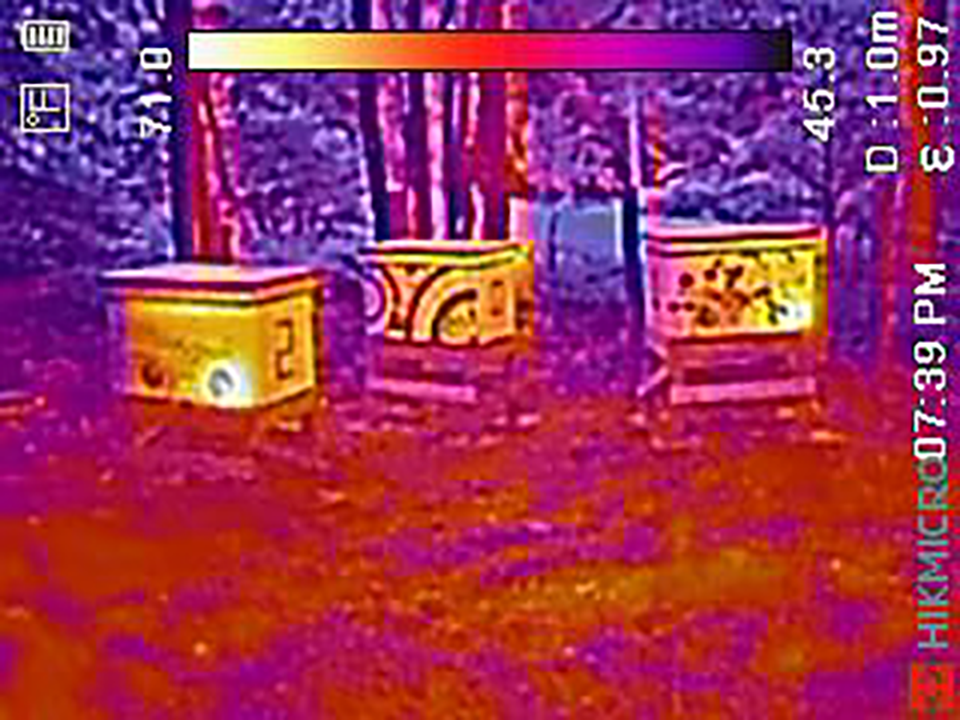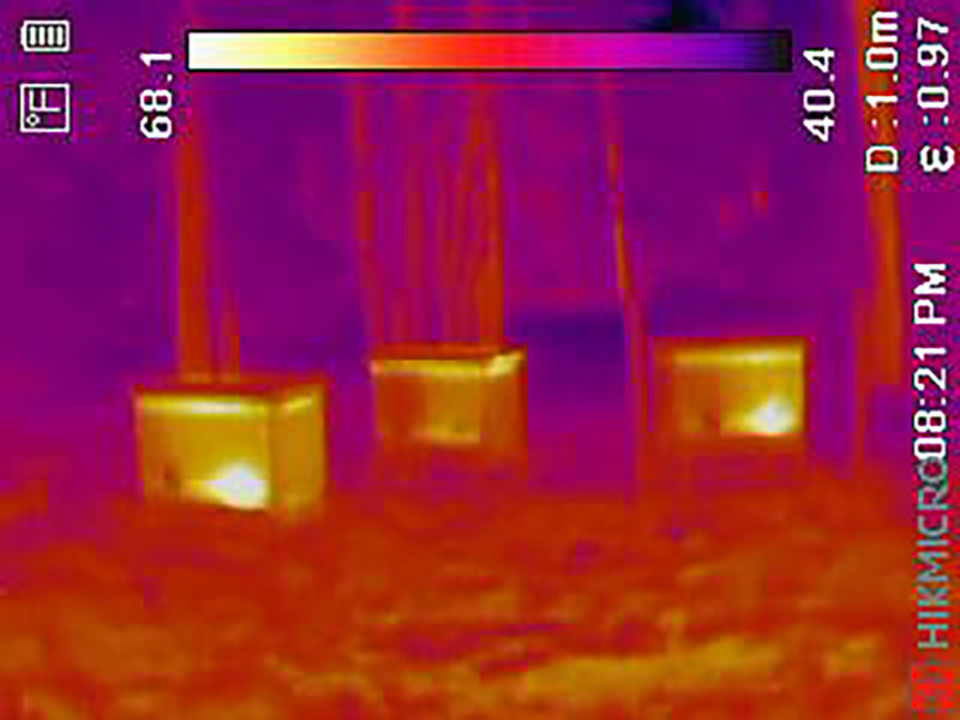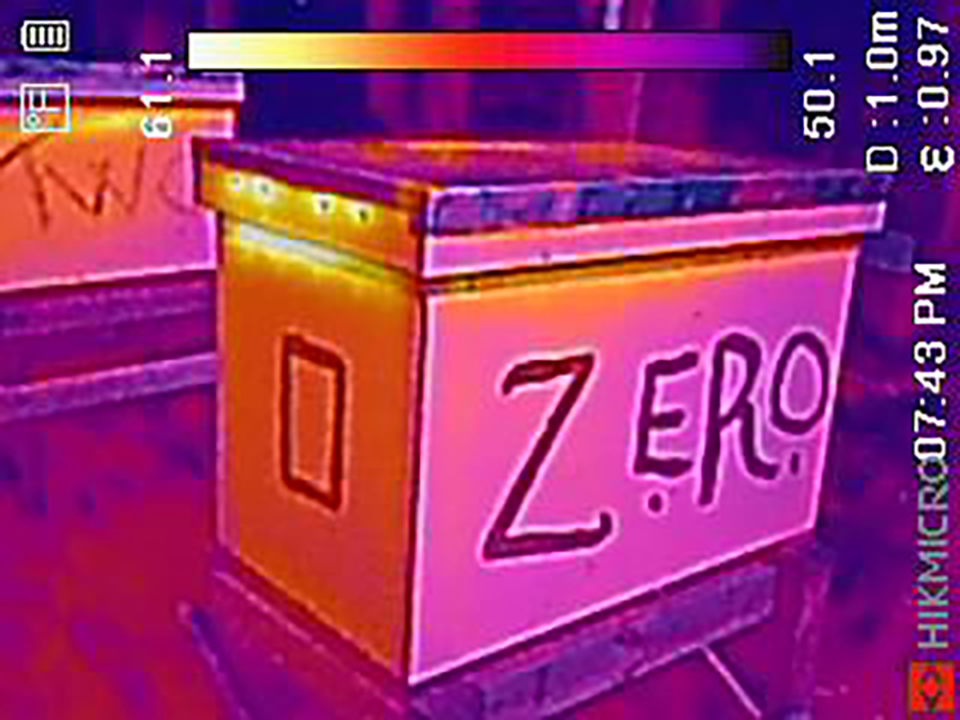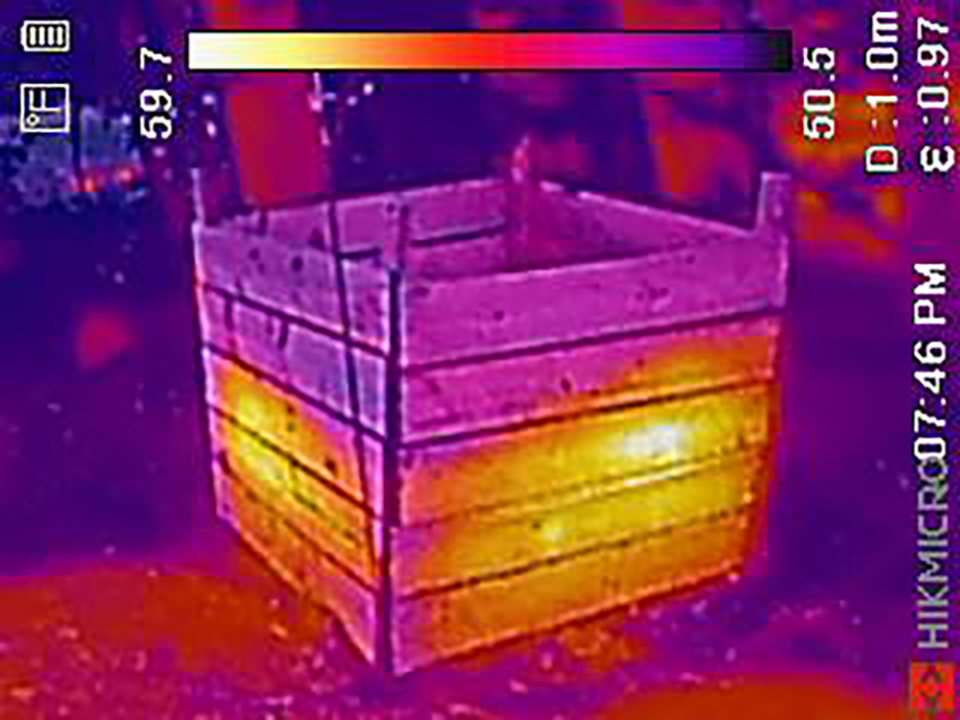I got out my thermal camera today to see how the beehives were doing in the infrared domain. These are composite pictures from the thermal imager, which combines the IR and visible images. The imager is relatively low-res by modern standards, with 320×200 pixels. That’s plenty to do inspections looking for hot/cold spots, but doesn’t really give a sharp visible image. These have been enlarged by Photoshop to make them easier to see on modern devices, but the fundamental resolution isn’t that great. Still, I thought these were really cool to see!
The yard in the evening. That yellow glow is telling you the hives are alive! My hives are numbered 0, 1, and 2. One is on the right, zero is in the back on the left.

Zero has always had a much lower population, so they’re not throwing as much heat. Remember, too, that these hives are insulated, so most of the heat is not detected from the outside. The bright spots on 2 and 1 are at the entrance, where there is an unobstructed view into the warm hive and where a pile of bees happened to be congregated, moving air through the hive to reduce and concentrate previously imported nectar.
The last few days it’s not been favorable weather to collect new nectar, so hives that had a bunch in storage (1 & 2) have been working to contrate what they had. Zero I think has finished concentrating what they have, so their internal temperature is down a bit and nobody’s at the entrance fanning air through because they’re not at work reducing when this photo was taken.
Zero’s been behind all season, but they’re definitely at work, bringing in material as they are able. If they had the queen problem I think they had 6 weeks ago, the prior workers would have largely died off by now and the new brood under a new queen would have only recently begun to emerge, so they have some catching up to do both in population and activity. I’ll be keeping close watch on them over the next month or two.
Here’s another shot of the yard, about an hour later, when the sun has just set. The visible part of the composite is mostly dark but you can get a stronger sense of the infrared in this one. The vertical red strokes are background trees, still a little warm from the sun. They are not plumes of heat from the hives.
You can see Zero’s heat is concentrated in a narrower band than the others, which is consistent with what’s inside the hive. Two (far left) has been the over-achiever of the bunch and the heat certainly corroborates that!

Even with their being a much smaller colony, though, don’t think Zero is idle. A close-up of their vents shows plenty of heat emerging from there. They’re just not hot enough to show through the insulated walls. The internal temperature probe is still showing >90F. Give them a month to catch up with population and we’ll see where things stand. It’s also possible that they’re just genetically predisposed to a smaller colony size. That’s okay, too.

As long as I had the thermal camera out, I aimed it at my compost, too. I was not surprised to see it cooking along. The visible evidence on the outside is subtle – the level just goes down slowly, even though I keep adding to it. Now, the difference between what shows as warm and what shows as ambient here is only about 9 degrees, but remember the compost insulates itself — the interior is going to be a lot warmer.
